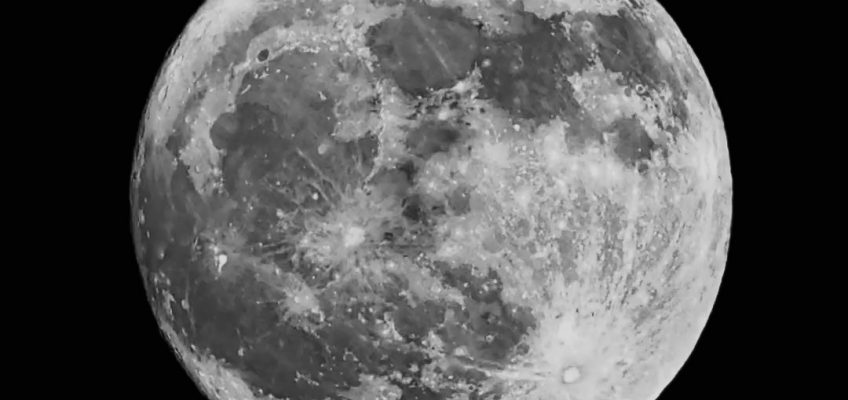This Thursday we’ll have our first full moon of astronomical summer but for all practical purposes the moon will be pretty much full all week long. As much as full moons louse up the skies for real stargazing and astrophotography, two things near and dear to me, I just love, love, love full moons! I’ve been known to stay up way too late relaxing on my deck, bathing under the light of the full moon. I call it my magic moon time.
As with all full moons, I love the names given to them by cultures all over the world. Some of the old-time American and Native American names for the July full moon include the full buck moon because this time of year buck deer begin sprouting out new antlers. It’s also called the thunder moon because of more frequent thunderstorms this time of year. My favorite name for the July full moon comes from ancient Chinese Buddhist tradition. They called it the Hungry Ghost moon.
Whatever you call the July full moon you can’t help but notice that it’s a low rider. July full moons don’t rise very high in the sky. They take the same low arc across the southern sky as the sun does as winter begins. This makes sense because this time of year the sun takes a very high arc across the southern sky during the day, and since the full moon is on the opposite side of the sky from the sun it just makes sense that it would be a low rider in the southern heavens in the good old summertime. That’s one of the reasons I like full moon gazing this time of year. You can enjoy it for an extended time without craning your neck nearly as much
Not only is it nice to gaze upon the moon in July, but you can also have a lot of fun taking pictures of it. You don’t even need that fancy of a camera. Even your smartphone can do a pretty good job if you do it right. Apps like ProShop and NightCap can really help with light and exposure control so the image isn’t just a washout of white.
Crescent moon (Mike Lynch)
If you really want to do it right, I suggest investing in either the new ZWO Seestar S30 or S50 All-in-One Smart Telescopes. Not only can you get amazing moon shots, but you can also capture star clusters, galaxies, nebulae, the sun, and even great terrestrial images. As I wrote about a few weeks ago, there’s a telescope revolution going on right now. These lower-cost photographic telescopes are becoming at least as popular as conventional visual scopes. For generally less than $600, you can purchase a photographic telescope controlled remotely with your smartphone or iPad. You can’t look through these scopes but instead you take celestial images with them. They have a real advantage over visual scopes because you see so much more in the way of color and detail in the photos you take than what you can see looking through the eyepiece of a traditional scope. And again, you don’t have to spend an arm and a leg. For example, the ZWO SeeStar S30 is only $349, and a great place to order one is Starizona in Tucson at www.starizona.com
You can also take some amazing pictures of the moon through the eyepiece of even a small to moderate visual telescope. Just hold your camera or your smartphone over the eyepiece as steady as you can. That can be a bit of a challenge. My suggestion is just keep hitting the shutter button or icon and hopefully you’ll get some decent shots. If possible, rig up a tripod or something else to help steady your camera or smartphone over the eyepiece.
Along with keeping the telescope steady, another thing that’s important is to start taking your shots through a low-magnification eyepiece with your telescope. That’ll have a much wider aperture than a high-magnification eyepiece. Once you get some low-magnification shots, see what you do with higher-magnification eyepieces.
To be honest full moons are not my favorite to photograph through a telescope. I actually prefer pictures of the moon at other various phases in its cycle. Crescent moons, half moons and even gibbous (football-shaped) moons are all fun to photograph. You can see more detail especially along what’s known as the terminator. That’s the line that divides the sunlit part of the moon from the darkened portion.
Once you get the photos, you can work with them with the editing functions on your phone or even software like Photoshop to make your captures look even better, but not fake. You can really see details in the dark maria or plains on the moon as well as the mountains and craters. You’ll want to share them, use them as screensavers, or even hang them on your wall! One more thing that makes gazing at the moon or photographing it so special this month is what happened in July, 56 years ago, when Neil Armstrong and Buzz Aldrin took the first human steps on the moon. I hope we go back there someday!
Mike Lynch is an amateur astronomer and retired broadcast meteorologist for WCCO Radio in Minneapolis/St. Paul. He is the author of “Stars: a Month by Month Tour of the Constellations,” published by Adventure Publications and available at bookstores and adventurepublications.net. Mike is available for private star parties. You can contact him at mikewlynch@comcast.net.
Related Articles
Skywatch: Full-blown July summer skies
Skywatch: The “Z” stars, tongue twisters of the night sky
Skywatch: A telescope revolution is here
Skywatch: Constant Capella
Skywatch: June stargazing — the great late show


Leave a Reply